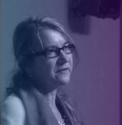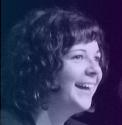Towards an Echology of Becoming: Digital Performance Research Under Covid-19
Adapting performance work and research into an experimental digital form due to Covid-19 affected not only the creative processes, but also the encounter between the three performers/researchers (Madeleine Worrall, John Dean and myself) who, having only met online, set up to explore how to retain liveness in (current) digital performance practice between August and October 2020.
At the start, we shared the creative emptiness which pushed us towards an online connection in order to keep ourselves artistically motivated during the pandemic-related social isolation, progressing to what we could do in front of a camera that would be perceived as ‘alive’, while searching for modes other than playreadings, which spread widely on the Internet during the first national lockdown - or attempts to package a theatre experience as a technological representation of a ‘real’ event in a material space.
Affect, connection and interactivity became key elements in constructing that online materiality of our practice in which, like the ‘avatars’ of Helen Varley Jamieson and Avatar Body Collision, we playfully exchanged the creative openness of our experimental stance through the interface. In the continuum of our virtual process, we found ourselves reframing our relations through a practical methodology which I define as an ‘ecology of becoming’, following the lead of Silvia Gherardi, in that as performers we were fluidly accepting the changes and the impact of the hybrid working conditions on us, rather than attempting to control them in a static manner.
Given that all three of us were ‘situated’ as participants in a Zoom call, it was also helpful to acknowledge the sociomaterial elements of our remote context during the process, such as what part of the house we chose as our working space, the surrounding noises which we could not ‘mute’, and other commitments before and after the meetings, in the wake of a post-psychophysical approach to performance training and practice, as proposed by Frank Camilleri.
While the experimentation brought creative and technical insights, the digital ‘infrastructure’ seemed to pervasively assert itself in the way we responded to each other, to the point that while improvising I often developed a physiological sensation of being ‘played’ by the screens, as if I wasn’t just inhabiting an alternative reality but a concrete post-human dimension of co-existence - or intra-existence, as Camilleri might say – with my fellow performers. In this highly mediated and hybrid relationality, as we never had the experience of each other’s energy and physicality in ‘real’ space, our respective memory now lies in our digital ‘image’, as a mythopoiesis of our mediatised personas.
As a small ensemble, we also trusted that a degree of closeness and togetherness would have been essential to create the complicity needed to facilitate each other’s ideas in practice, so we took our ‘digital’ bodies for granted, or according to Rebecca Loukes as ‘extensions of our bodyminds’, fighting against the remoteness and immateriality of our ‘presence’. At the end of each meeting, the awkward disconnection - the ‘switching off’ of our interactivity as if we were not only unplugging the technology, but also the human being behind it - forced us to confront the corporeal absence and the unsubstantial void in which we were operating, and where any emotional bonding could only be projected, imagined, and tacitly procrastinated to a future meeting in ‘real’ life.
Nevertheless, the body is not completely obsolete (yet) and as we managed to reclaim our human connection through doing, we became companions, and this - plus our home environments revealed through the transparency of screen backgrounds or made into a total performance space - resonates in the video documentation, in itself a digital reverberation of that virtual reality we forged together, and which now lives in a disembodied memory, to the point that I wonder not just about ‘what’ happened, but ‘where’ it happened, in an almost dystopian urge to survive and make sense of this unprecedented hybrid life.





